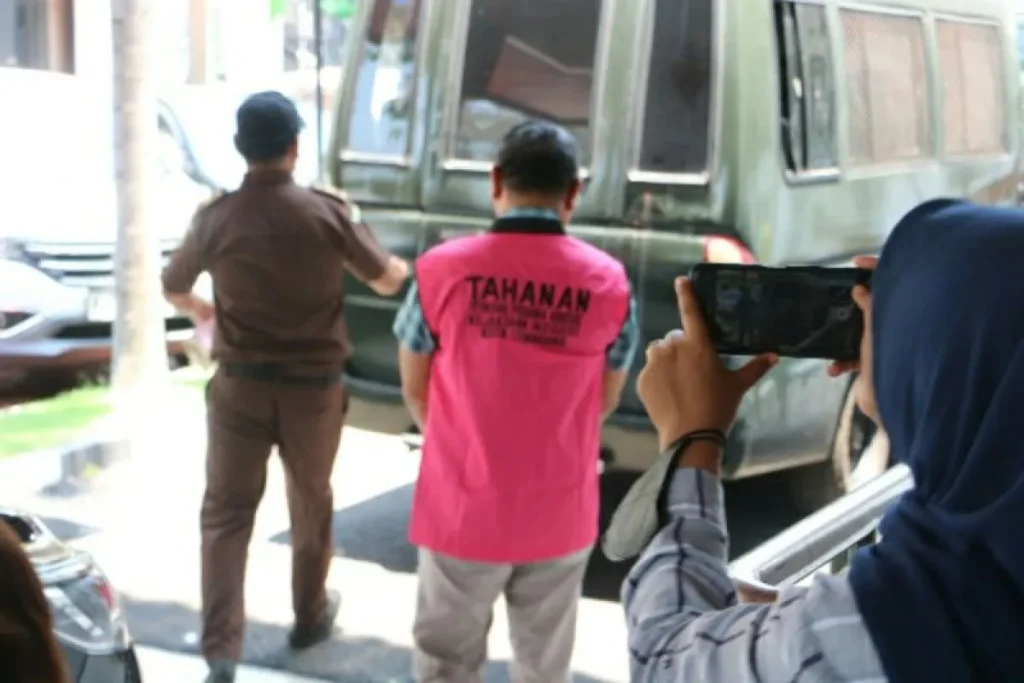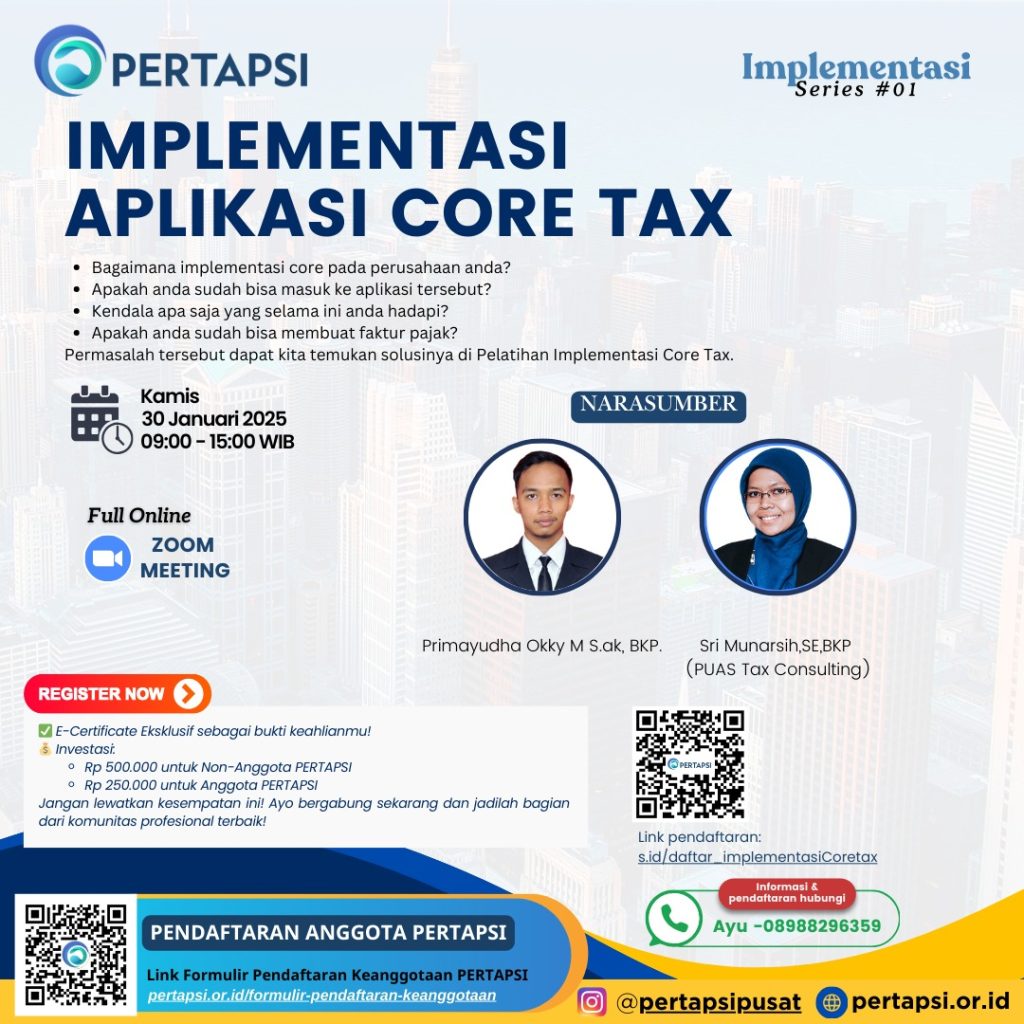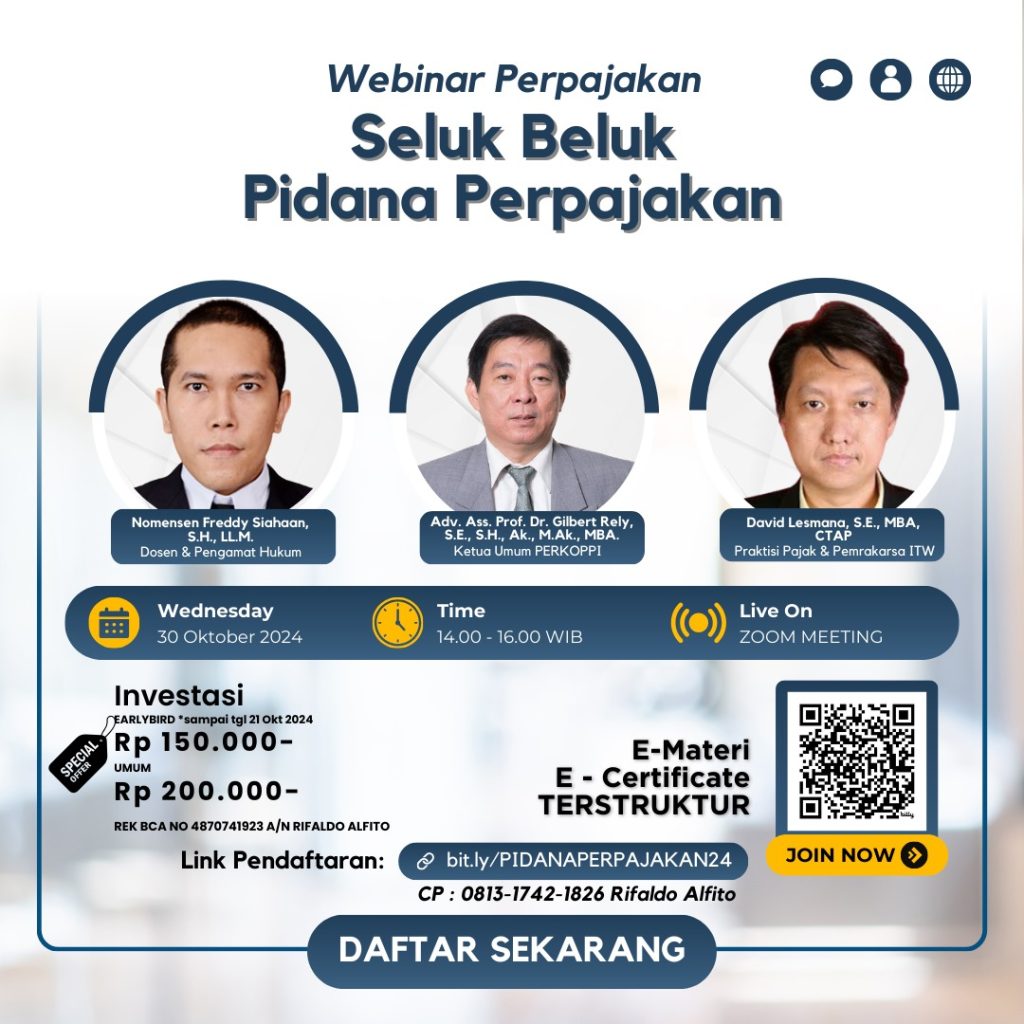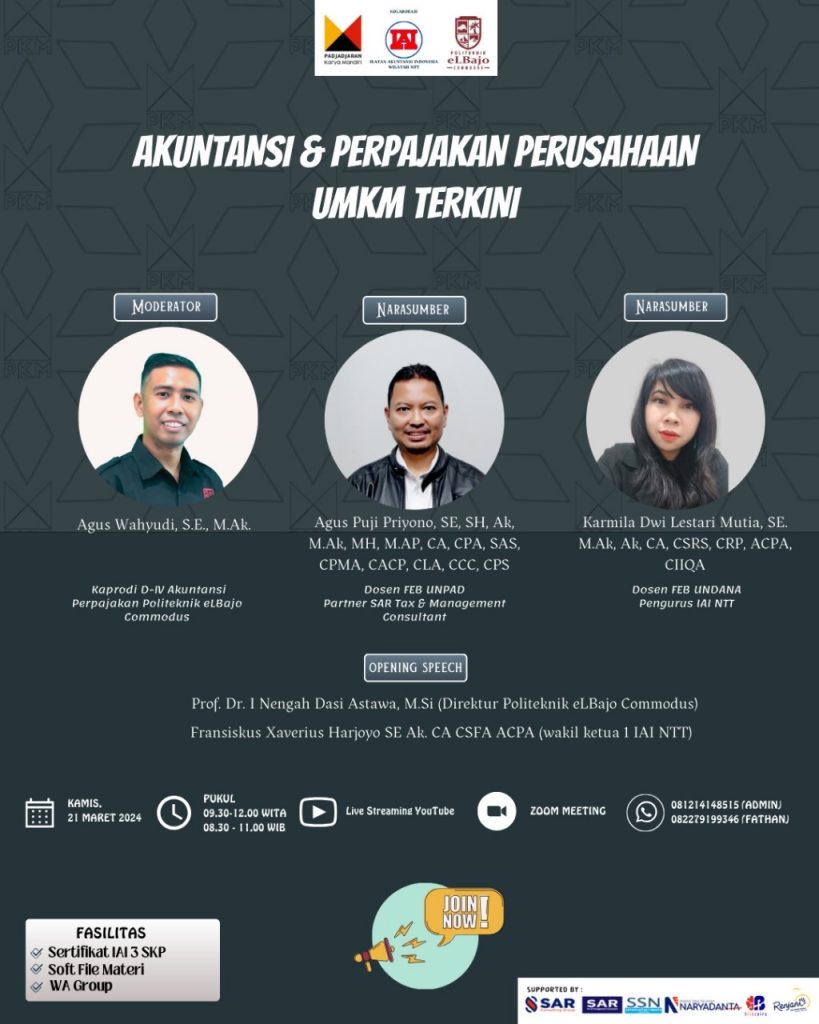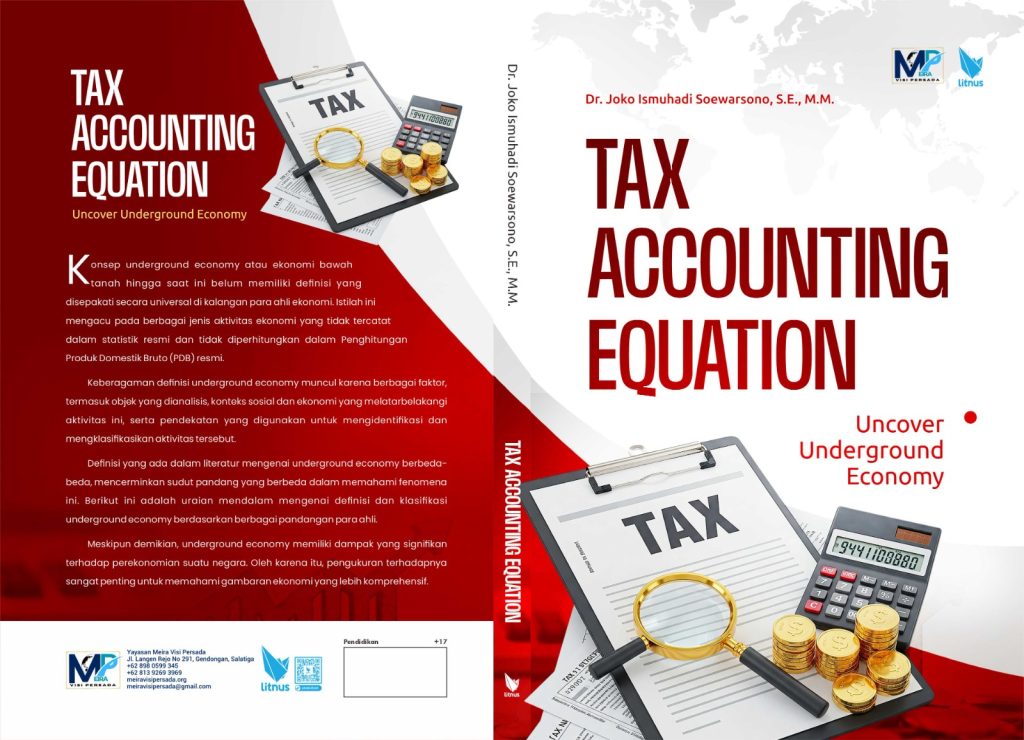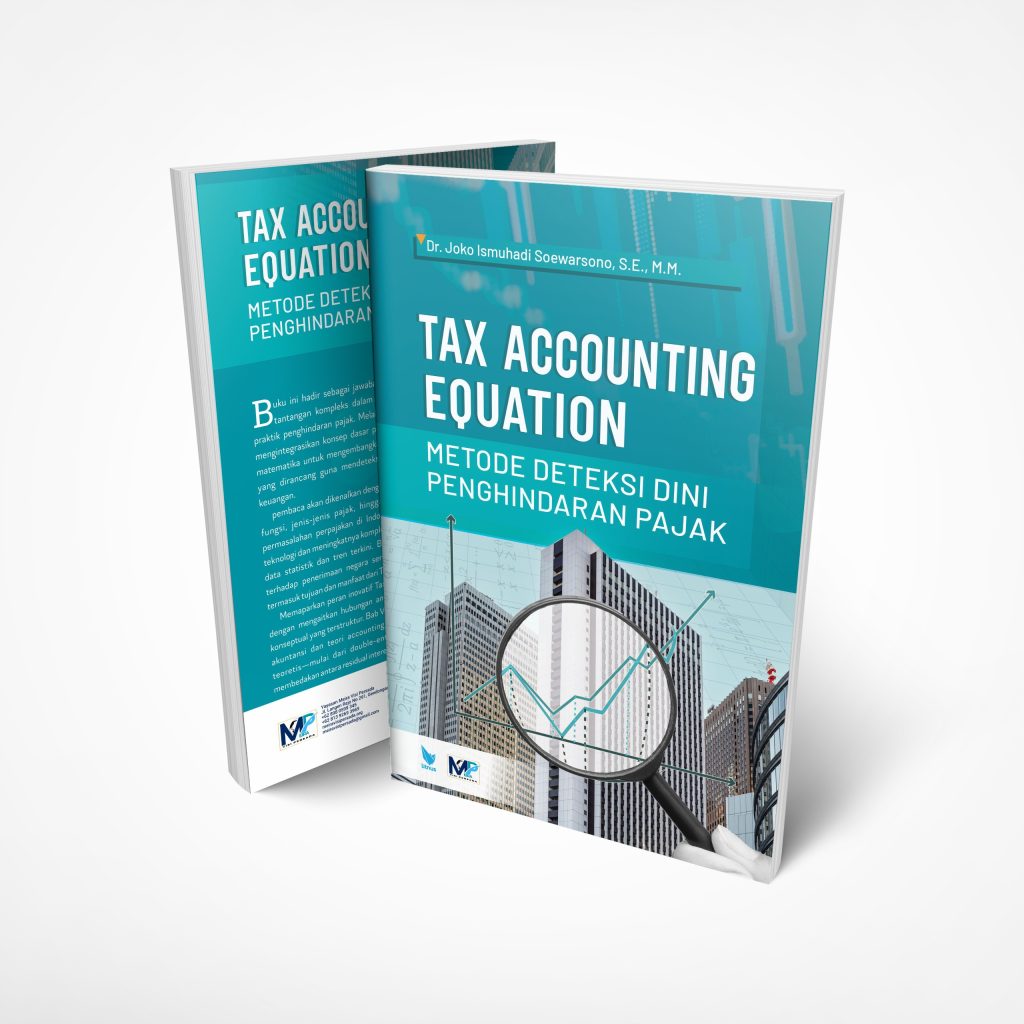
A Comprehensive Analysis of Indonesia’s Proposed Tax Administration Vision: Integrating Philosophy, Forensics, and Advanced Technology for Fiscal Transformation
- Ekonomi
Tuesday, 03 June 2025 01:33 WIB
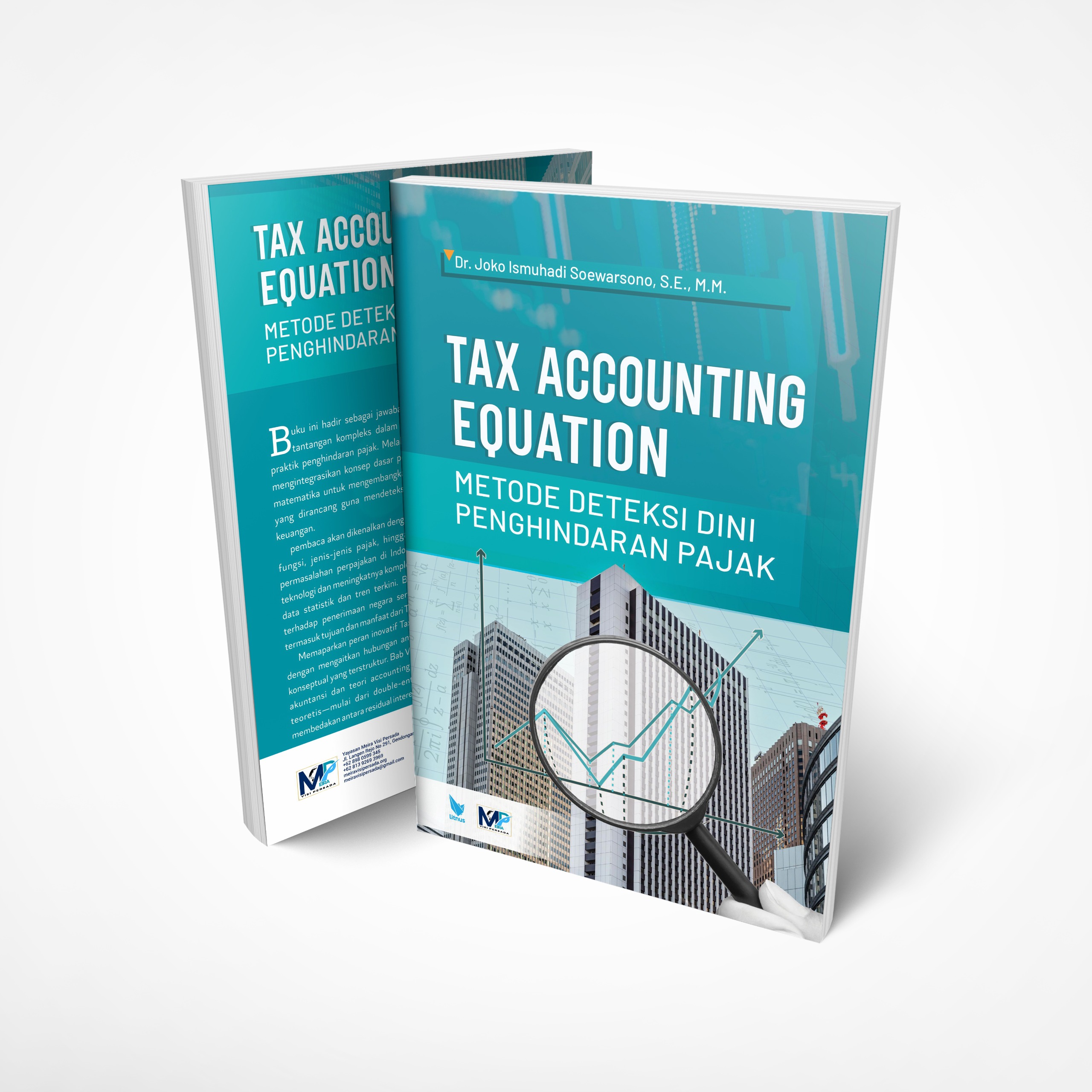
Jakarta, fiskusnews.com:
I. Executive Summary
The Prabowo-Gibran administration in Indonesia has unveiled an ambitious vision for its tax administration, aiming to significantly bolster state revenue. This strategic initiative is anchored by a goal of achieving a 23% state revenue-to-GDP ratio by 2029. The proposed framework is multifaceted, integrating the philosophical underpinnings of Tri Hita Karana, the forensic accounting capabilities of the Ismuhadi Equation (TAE), and an advanced Self-Assessment Monitoring System (SAMS) equipped with automated discrepancy detection and ‘Surat Himbauan’ triggers. These technological advancements are designed to operate within the modernized Core Tax Administration System (CTAS).
This report meticulously analyzes how the Tri Hita Karana philosophy is intended to foster voluntary compliance and ethical governance within the tax system. It further examines the Ismuhadi Equation, a mathematical framework developed for detecting sophisticated tax evasion , and the advanced SAMS, which leverages data analytics, Artificial Intelligence (AI), and Machine Learning (ML) for automated discrepancy detection and the initiation of ‘Surat Himbauan’. These components are envisioned to synergistically enhance the efficiency and effectiveness of Indonesia’s tax administration.
While this integrated vision holds substantial promise for modernizing Indonesia’s fiscal system, addressing its persistently low tax ratio—currently hovering around 10-12% —and combating the pervasive informal economy , the 23% state revenue target is viewed as highly ambitious by economic experts. Key challenges to its realization include potential institutional resistance, the complexities of bureaucratic restructuring, and the critical need for robust technological implementation coupled with the cultivation of public trust.
II. Introduction: Setting the Stage for Indonesia’s Tax Reform
Current Landscape of Indonesia’s Tax Ratio and Historical Challenges
Indonesia’s tax ratio, defined as the proportion of tax revenue to Gross Domestic Product (GDP), has consistently remained low, hovering around 10-12% in recent years. In 2022, it was recorded at 10.39%, and in 2023, it stood at 10.3%. This figure is notably below the 15% threshold generally recommended for developing countries and significantly lags behind that of peer nations such as the UK (27.3%), Mexico (14.3%), Brazil (14.2%), and Canada (14.0%). A higher tax ratio is widely recognized as crucial for national development, enabling governments to fund essential public services and infrastructure, reduce reliance on external debt, and strengthen the overall economic foundation.
The persistent low tax ratio in Indonesia stems from a confluence of factors. These include a historically low taxpayer compliance rate , a substantial informal sector that operates largely outside the formal tax system , and insufficient enforcement mechanisms due to limited resources and inefficient administrative systems. Furthermore, the complexity of existing tax regulations and a prevailing lack of public trust, often exacerbated by perceptions of corruption within tax authorities, contribute significantly to the challenge. The substantial tax gap—the difference between the amount of tax that should be collected under full compliance and the amount actually received—underscores the significant unrealized revenue potential within the current system. This gap is primarily composed of non-filing (taxpayers failing to report taxable events), underreporting (providing incomplete or inaccurate information), and non-payment (filing returns but not remitting the tax liability).
The Prabowo-Gibran Administration’s Strategic Imperative for Tax Revenue Growth
The Prabowo-Gibran administration has articulated a clear strategic imperative for increasing state revenue to support its ambitious development agenda. The government aims for an average economic growth rate of 5.7%-6% during the 2025-2029 period, which necessitates substantial investment ranging from IDR 35,212.4 trillion to IDR 35,455.6 trillion. The government’s expected contribution to this investment, projected at 8.4%-10.1%, underscores the critical need for enhanced state revenue.
To achieve these fiscal objectives, the administration plans to implement several key policies. These include a comprehensive modernization of the Core Tax Administration System (CTAS), the introduction of more progressive tax reforms, stricter law enforcement to improve taxpayer compliance, and the simplification of business processes alongside institutional governance reforms. These initiatives collectively form the backbone of the proposed tax administration vision.
Clarification of the Tax Ratio Targets
It is crucial to clarify the distinction between the various revenue targets articulated by the Prabowo-Gibran administration, as public and expert discussions often conflate these figures. The National Medium-Term Development Plan (RPJMN) for 2025-2029, formalized through Presidential Regulation No. 12 of 2025, officially sets the tax revenue-to-GDP ratio target at a level between 11.52% and 15% by 2029. This is a specific target for revenue derived solely from taxation.
However, the same Presidential Regulation prioritizes the establishment of a new State Revenue Agency (BPN) with an ambitious goal to increase the broader state revenue ratio to 23% of GDP. This 23% figure refers to total state revenue, which encompasses not only tax revenue but also non-tax state revenue (PNBP). The separation of these two targets is significant because their feasibility and the policy implications for achieving them differ considerably. Misinterpreting the 23% as solely a tax ratio target could lead to unrealistic expectations and potentially misdirected policy efforts. The government’s communication strategy must precisely articulate this difference to ensure public understanding and manage expectations effectively. This distinction also highlights a strategic intent to diversify revenue sources beyond traditional taxation, including non-tax state revenue, which warrants its own set of policy considerations.
Overview of the Integrated Vision and its Core Pillars
The proposed tax administration vision is a comprehensive and integrated strategy built upon several core pillars. It seeks to combine a deeply rooted cultural philosophy, Tri Hita Karana, with a sophisticated forensic accounting tool, the Ismuhadi Tax Accounting Equation (TAE). These are then integrated into a modern technological system, the Self-Assessment Monitoring System (SAMS), which leverages Artificial Intelligence (AI) and Machine Learning (ML) for automated discrepancy detection and the triggering of ‘Surat Himbauan’. All these components are designed to operate seamlessly within the overarching Core Tax Administration System (CTAS), collectively addressing Indonesia’s multifaceted tax challenges.
III. The Philosophical Underpinning: Tri Hita Karana and Tax Compliance
Detailed Exposition of the Tri Hita Karana Philosophy
The Tri Hita Karana (THK) philosophy, originating from Bali, represents a profound worldview emphasizing the cultivation of harmonious relationships across three fundamental domains: with God (Parhyangan), with fellow human beings (Pawongan), and with nature or the environment (Palemahan). This holistic philosophy is now being proposed as a guiding framework to reinterpret tax compliance in Indonesia, with the ultimate objective of achieving mutual welfare for all citizens. The Nusantara paradigm, with its integral view of reality, religiosity, and cultural emphasis, aligns closely with THK’s principles, aiming for the creation of shared prosperity as articulated in the preamble to the 1945 Constitution.
Proposed Integration of THK Values into Tax Policy and Administration
The integration of THK values into Indonesia’s tax policy and administration is envisioned to foster a shift from mere coercive compliance to “voluntary obedience”. This approach seeks to instill a deeper, heartfelt commitment to tax obligations among taxpayers.
- Parhyangan (Harmonious relationship between humans and God): In this context, taxes are viewed not merely as a legal obligation but as a moral duty and a form of “wages” paid to the authorities for the protection and order provided by the state. This perspective resonates with Hindu teachings that encourage tax adherence as an act of devotion and concern for the divine. The government, in its role as an extension of God’s will on earth, is thus tasked with creating tax laws that genuinely aim to realize prosperity and happiness for individuals, society, and the nation. This concept is further linked to yadnya, the idea of holy sacrifices carried out sincerely as an expression of gratitude to God, thereby imbuing tax payments with spiritual significance.
- Pawongan (Harmonious relationship between humans and humans): This dimension emphasizes that tax payments serve as a mechanism for cross-subsidies, transferring resources from the wealthy to the less fortunate, thereby fostering common welfare. This principle guides the government and the Directorate General of Taxes (DGT) to formulate tax policies that are conducive for taxpayers to fulfill their obligations equitably, promoting harmony and collective responsibility. Tax incentives, such as those implemented during the Covid-19 pandemic, are cited as practical examples of how welfare can be created through tax payments, reinforcing the idea that compliance is a service to the state and a form of devotion to a greater collective good.
- Palemahan (Harmonious relationship between humans and nature/environment): This aspect frames tax compliance as an act of accountability for public funds. Taxpayers, in turn, expect to receive tangible benefits through the provision of public facilities and infrastructure built by the government. The Subak metaphor, an indigenous Balinese water management system characterized by mutual cooperation and proportional contributions, illustrates this concept, highlighting the importance of accountability and shared benefits. The government’s role, therefore, is to construct a tax system that maximizes social welfare, ensuring that the utility derived by individuals from public services justifies their contributions.
The overarching aspiration of this philosophical integration is to move beyond punitive measures like sanctions, investigations, or coercive actions, which often only induce temporary fear. Instead, the aim is to cultivate a sustained, voluntary compliance that originates from a genuine commitment to collective well-being.
Implications for Fostering Taxpayer Trust, Ethical Governance, and Shared Welfare
The THK philosophy profoundly impacts the approach to fostering taxpayer trust, ethical governance, and the pursuit of shared welfare. It underscores that fairness and equality are paramount principles in taxation, requiring the state to act impartially towards all taxpayers without discrimination. The philosophy posits that tax payments are fundamentally for shared prosperity, which inherently demands transparent and ethical utilization of funds by the government.
For the THK philosophy to effectively translate into improved tax compliance, significant and visible efforts to enhance ethical governance and combat corruption within the tax administration are indispensable. Historical evidence indicates that a lack of public trust, often stemming from “tax culture and trust issues” and specifically “corruption cases involving tax officials,” negatively impacts taxpayer compliance, leading to reluctance to pay taxes honestly due to the perception that funds are misused for personal gain. This establishes a direct causal link: the erosion of public trust due to corruption directly undermines the very foundation of voluntary compliance that the THK philosophy seeks to build. Without addressing this fundamental trust deficit through robust anti-corruption measures and transparent governance, the philosophical underpinning may struggle to yield tangible improvements in compliance behavior.
Challenges in Translating Philosophical Principles into Practical Tax Compliance
Translating the high-minded principles of THK into tangible improvements in tax compliance presents several practical challenges. The “agency problem” is particularly relevant here, where government officials, acting as agents, might possess self-interests that diverge from the public good, potentially leading to moral hazard. This directly relates to the issue of corruption, where the public’s perception of misused funds can erode their willingness to comply voluntarily.
While THK values emphasize community contributions, such as funding for temple development, education, and public facilities , a significant challenge lies in ensuring that taxpayers perceive their tax payments as directly contributing to these shared benefits, rather than being diverted or misused. Furthermore, practical difficulties exist in aligning economic development with environmental and social well-being, as evidenced by ongoing pressures for land conversion despite the guiding principles of THK. Nevertheless, positive steps, such as providing tax incentives for farmers, demonstrate an effort to align policy with THK values by directly linking tax policy to community and environmental welfare.
IV. The Analytical Core: Dr. Joko Ismuhadi’s Tax Accounting Equation (TAE)
Mathematical Formulations of the Tax Accounting Equation (TAE) and Mathematical Accounting Equation (MAE)
At the analytical heart of Indonesia’s proposed tax administration vision lies Dr. Joko Ismuhadi’s Tax Accounting Equation (TAE). Dr. Ismuhadi, an Indonesian tax specialist, developed this pioneering mathematical tool to analyze financial reporting and pinpoint potential discrepancies indicative of financial irregularities and tax evasion within the unique Indonesian context. It represents a significant adaptation of the fundamental accounting equation for specialized tax analysis.
The TAE is presented in two interrelated formulations:
- Revenue – Expenses = Assets – Liabilities
- Revenue = Expenses + Assets – Liabilities
These formulations strategically emphasize revenue as a critical indicator of a company’s economic activity and its consequent tax obligations. By establishing a direct link between profitability, as reflected in the income statement (Revenue – Expenses), and net worth, as shown on the balance sheet (Assets – Liabilities), the TAE provides tax authorities with a more targeted lens for identifying potential tax irregularities.
Furthermore, for specific scenarios where taxable income might be intentionally reported as zero or negative to minimize tax liabilities, Dr. Ismuhadi also formulated the Mathematical Accounting Equation (MAE):
- Assets + Dividen + Beban = Kewajiban + Ekuitas + Pendapatan
The core mathematical principle underpinning these equations is the establishment of an expected equilibrium between key financial reporting components and a company’s tax obligations. Significant deviations from these anticipated relationships can serve as robust indicators of potential tax avoidance or fraudulent activities.
Specific Design and Relevance of TAE for Detecting Financial Irregularities
The TAE is particularly relevant and specifically designed for the Indonesian financial and regulatory landscape. Developed by an Indonesian tax expert with deep understanding of the local tax system, it accounts for the unique challenges and characteristics of the Indonesian economy, including the prevalence of the underground economy and various common tax evasion tactics.
The equation targets specific financial reporting patterns and manipulations frequently observed in Indonesia. For instance, it can detect:
- Underreporting of income, a common tax evasion tactic.
- Intentional misclassification of income as debt, potentially through related party transactions, which could be indicated by an unusually high level of liabilities relative to reported revenue growth.
- Manipulation of financial statements to evade taxes, such as reporting low profits while showing a significant increase in assets that is not adequately explained by changes in liabilities or equity.
- The use of clearing accounts to temporarily misrecord revenues as liabilities or expenses as assets, a deceptive practice TAE is designed to uncover.
Applications of TAE as a Forensic Accounting Tool for Early Detection and Risk Assessment
One of the primary benefits of the TAE is its capacity for the early detection of potential tax avoidance schemes by identifying inconsistencies in financial reporting. It provides a data-driven methodology to focus tax authorities’ attention on companies exhibiting suspicious financial patterns, thereby moving beyond resource-intensive random audits and allowing for more efficient resource allocation. The TAE offers a quantitative framework for tax authorities to assess financial statements, enabling a more rigorous and data-informed approach to compliance.
The integration of TAE into a Self-Assessment Monitoring System (SAMS) has the potential to transform Indonesia’s self-assessment system. Indonesia currently operates under a Self-Assessment System (SAS), where taxpayers are responsible for calculating, paying, and reporting their taxes, with tax officials primarily verifying these reports. A persistent challenge in this system is low taxpayer compliance and significant underreporting. The Ismuhadi Equation (TAE) is explicitly designed as a forensic accounting tool for the early detection of irregularities. By integrating TAE into SAMS, the system enables organizations (taxpayers) to internally identify potential tax risks. This means TAE is not merely a tool for the Directorate General of Taxes (DGT) to use after a tax return is filed (reactive auditing), but can serve as a proactive, internal control mechanism for taxpayers to ensure accuracy before filing, or for the DGT to monitor during the self-assessment process. This fundamentally shifts the paradigm from purely reactive auditing to a more proactive, data-driven approach to compliance assurance. This strategic application can significantly reduce the underreporting component of the tax gap by enabling both taxpayers to self-correct and the DGT to identify discrepancies more efficiently, fostering a stronger culture of compliance from within.
The TAE can also complement traditional tax audit techniques and emerging technologies like Artificial Neural Networks (ANN) for enhanced tax fraud detection, offering a unique equation-based approach to financial scrutiny.
Table 1: Comparative Analysis: Fundamental Accounting Equation vs. Ismuhadi Equation (TAE)
| Feature | Fundamental Accounting Equation | Tax Accounting Equation (TAE) | Mathematical Accounting Equation (MAE) |
|---|---|---|---|
| Formulation | Assets = Liabilities + Equity | Revenue – Expenses = Assets – Liabilities; Revenue = Expenses + Assets – Liabilities | Assets + Dividen + Beban = Kewajiban + Ekuitas + Pendapatan |
| Primary Emphasis/Focus | Financial Position at a point in time | Profitability and its relation to Net Worth; Revenue as key indicator for tax obligations | Addressing scenarios of zero/negative taxable income manipulation |
| Primary Use | General Financial Reporting; Understanding solvency and liquidity | Forensic Tax Analysis; Early Detection of Tax Irregularities (avoidance/evasion) | Refined analytical approach for specific income statement manipulation |
| Relevance to Indonesian Context | General financial understanding | Specifically designed for Indonesian economy, including underground economy and common evasion tactics | Tailored for specific Indonesian tax evasion scenarios |
This comparative analysis highlights the fundamental shift in analytical perspective that Dr. Ismuhadi’s equations offer compared to the traditional accounting framework. By clearly delineating the differences in formulation, focus, and application, it underscores why TAE and MAE are more specialized and effective tools for tax authorities in combating complex tax evasion and addressing the unique characteristics of the Indonesian economy, particularly the prevalence of the underground economy. It effectively demonstrates the “targeted lens” that these novel equations provide for tax analysis.
V. Modernizing Compliance: Advanced Self-Assessment Monitoring System (SAMS)
Concept and Strategic Benefits of Integrating TAE into a SAMS
A Self-Assessment Monitoring System (SAMS) represents a structured, proactive, and data-driven approach for organizations to evaluate their internal processes and controls, identify areas for improvement, manage tax obligations, and mitigate risks. The strategic integration of the Tax Accounting Equation (TAE) within a SAMS allows organizations to establish an internal, data-driven mechanism for identifying potential tax irregularities, ensuring the accuracy of their financial data, and fostering a stronger culture of compliance.
The benefits of this integration are substantial. It promises improved early detection of tax avoidance and fraud, increased efficiency in uncovering hidden economic activity, and strengthened internal controls over financial reporting. Furthermore, a robust SAMS can potentially streamline external audit processes by providing clear evidence of proactive tax compliance. The continuous monitoring facilitated by an automated SAMS, leveraging TAE, embeds a robust control mechanism for financial data accuracy and completeness directly relevant to tax obligations.
Mechanisms for Automated Discrepancy Detection
The proposed modernization of Indonesia’s tax administration heavily relies on advanced technological capabilities, particularly within the STEM CEL module (Science, Technology, Engineering, and Mathematics with Collaboration for Empowering Law-enforcement). This module is a crucial component, designed to enhance the capabilities of the tax administration through transparent accounting practices, data-driven analysis, and advanced technological infrastructure. Data analytics plays a vital role in processing vast amounts of taxpayer data to identify patterns, anomalies, and compliance risks, which in turn informs audit strategies and improves taxpayer services. The Directorate General of Taxes (DGT) has already recognized data analytics as a strategic initiative.
Artificial Intelligence (AI) and Machine Learning (ML) offer significant possibilities for enhancing tax administration functions such as fraud detection, risk assessment, and efficient taxpayer support. Indonesia’s national AI strategy indicates a government-wide recognition of the transformative potential of these technologies. Within the SAMS, these technologies will power advanced real-time monitoring and alert systems, including:
- Anomaly detection systems: Powered by AI/ML algorithms, these systems will analyze vast amounts of taxpayer data to identify unusual patterns in financial behavior, transaction volumes, or reported income that may indicate potential non-compliance.
- Threshold-based alerts: These will trigger notifications when financial indicators fall outside predefined ranges or violate TAE principles, signaling potential issues.
- Risk scoring mechanisms: These will assign compliance risk scores to taxpayers, generating alerts for high-risk entities, thereby enabling targeted interventions.
- Event-driven alerts: These systems will respond to specific taxpayer actions, such as late filing or significant data changes, prompting immediate attention.
- Integration with other government databases: This will allow cross-referencing of information to trigger alerts for inconsistencies across various data sources.
While the DGT has established data analytics capabilities and core data management functions through its Directorate of Tax Data and Information (DIP) , tax officers, who are the end-users of this data, frequently encounter a “last-mile problem.” This means the data provided is not immediately actionable, often requiring officers to develop their own data pipelines for further processing and analysis before it can be effectively used for decision-making. This situation can lead to techniques and procedures that may conflict with the organization’s data governance policies. This challenge manifests in various compliance monitoring activities, including tax compliance supervision using “e-Faktur” data, data matching across disparate sources, and data extraction/analysis in e-Audit and digital forensics. The successful implementation and effectiveness of automated discrepancy detection and ‘Surat Himbauan’ triggers within SAMS are highly dependent on overcoming this “last-mile problem.” If tax officers cannot efficiently and consistently utilize the sophisticated data generated by TAE and AI/ML, the system’s full potential will not be realized, leading to delays, reduced effectiveness in compliance monitoring, and potential conflicts with data governance. Empowering frontline tax officers with self-service analytics tools is crucial for operationalizing the advanced system. To address these challenges, key recommendations include enhancing existing analytics applications through a “reverse-ETL” approach to feed processed data back into operational systems, and providing more flexible self-service analytics platforms, such as an analytics sandbox leveraging containerization, to enable tax officers to process and analyze data independently.
The Role of Detected Discrepancies in Triggering DGT Actions, including ‘Surat Himbauan’
Significant deviations from the TAE’s expected relationships serve as clear red flags for tax authorities, indicating areas that warrant further scrutiny. The SAMS would provide visual dashboards displaying key financial metrics derived from the TAE, offering tax officials an at-a-glance overview of a taxpayer’s financial health and potential tax compliance risks.
The query specifically mentions ‘Surat Himbauan’ (warning letters). While the provided information primarily details the “Tax Collection Letter (Surat Tagihan Pajak ‘STP’)” , which is a formal mechanism issued by the DGT to collect tax administration sanctions arising from violations or errors in fulfilling tax obligations, including unpaid or underpaid income tax , a ‘Surat Himbauan’ is typically a less formal, pre-enforcement measure. It is generally aimed at encouraging voluntary compliance or self-correction before formal penalties are imposed. Given the capabilities of the advanced SAMS, with its automated discrepancy detection leveraging TAE and AI/ML, the system is ideally positioned to generate such pre-emptive himbauan for minor discrepancies or early-stage anomalies. This strategic application could significantly improve compliance rates by allowing taxpayers to self-correct identified issues before incurring penalties, thereby reinforcing the Tri Hita Karana philosophy’s emphasis on harmony and trust in the tax administration. This aligns perfectly with the broader goal of fostering “voluntary obedience” and improving taxpayer compliance through a less punitive approach before resorting to formal collection letters like STP.
Integration of SAMS within the Broader STEM CEL Module and the Core Tax Administration System (CTAS)
The Core Tax Administration System (CTAS) serves as the central technological platform for Indonesia’s tax administration. Its objective is to replace outdated manual processes with a modern, digital-first approach, streamlining essential tax operations such as taxpayer registration, tax return filing, payment processing, compliance tracking, and audits. The STEM CEL module, which encompasses the Self-Assessment Monitoring System (SAMS), the Tax Accounting Equation (TAE), and Triple Entry Accounting, is designed for seamless integration into CTAS.
Enriched data and insights generated by SAMS, including identified risks, anomalies, and compliance scores, would be seamlessly integrated into CTAS, providing tax officials with a comprehensive and unified view of taxpayer compliance. Furthermore, the proposed use of triple entry accounting, potentially utilizing blockchain or other distributed ledger technologies (DLTs), is intended to enhance transparency and auditability by incorporating a third linked entry for each transaction. This would feed detailed and transparent financial data directly into the system, forming a robust foundation for subsequent analysis.
The proposed vision forms a highly integrated and complex ecosystem: Triple Entry Accounting feeds data, TAE analyzes it, SAMS monitors and detects, and CTAS serves as the central platform for all operations and insights. This creates a powerful synergistic effect where each component enhances the others. However, it also introduces a high degree of interdependency. If any single component, particularly the foundational CTAS, experiences significant operational challenges, it could create a severe bottleneck for the entire system, hindering the successful integration and full operationalization of TAE and SAMS. For instance, the new Core Tax Administration System (Coretax) has faced “numerous issues and complaints” since its early 2025 launch, including unpreparedness for mass access, bugs in crucial system functions, and server infrastructure limitations. The success of the overall tax administration modernization effort is critically dependent on the robust and stable performance of each integrated component. Addressing CTAS’s reported issues—such as “bugs,” “unpreparedness for mass access,” and “server infrastructure” limitations —is paramount. A phased rollout and rigorous quality assurance are not merely good practices but essential requirements to mitigate the risk of systemic failure and ensure the ambitious technological vision translates into practical improvements.
Table 2: Key Features and Operational Workflow of the Integrated SAMS (TAE, AI/ML, CTAS)
| Phase/Component | Description | Key Technologies/Tools | Purpose/Output | Relevant Snippet IDs |
|---|---|---|---|---|
| 1. Data Foundation | Triple Entry Accounting: Enhanced transparency and auditability by adding a third linked entry for each transaction. | Blockchain, Distributed Ledger Technologies (DLTs), Smart Contracts | Secure, transparent, and detailed financial data capture. | |
| 2. Analytical Engine (SAMS) | Ismuhadi Equation (TAE) Application: Automated analysis of financial data against TAE principles to detect inconsistencies. | Automated rules and algorithms, Data Analytics Platforms | Early detection of potential tax irregularities, fraud, and evasion. | |
| AI/ML Algorithms: Analyze vast datasets for unusual patterns, predict linkages, and compute social network metrics. | Artificial Intelligence (AI), Machine Learning (ML), Anomaly Detection Systems | Identify anomalies, assess compliance risks, inform audit strategies. | ||
| Alert & Risk Scoring Systems: Generate notifications for deviations from thresholds and assign compliance risk scores. | Threshold-based alerts, Risk scoring mechanisms, Event-driven alerts | Prioritize high-risk taxpayers for targeted intervention. | ||
| Data Cross-referencing: Integrate and compare data from various internal and external government databases. | Data integration tools, Fuzzy matching techniques (for non-unique IDs) | Enhance data accuracy, identify inconsistencies across sources. | ||
| 3. Operational Integration | Core Tax Administration System (CTAS) Integration: Seamless flow of enriched data and insights from SAMS into the central CTAS. | Integrated platform, Reverse-ETL mechanisms | Unified view of taxpayer compliance for officials, streamlined operations. | |
| 4. DGT Action & Enforcement | Visual Dashboards: Provide tax officials with at-a-glance overview of financial health and compliance risks. | Business Intelligence (BI) tools, Data Visualization | Facilitate informed decision-making by tax officials. | |
| Automated Discrepancy Detection & Triggers: Systematically flag potential non-compliance based on analytical findings. | Automated detection algorithms | Initiate DGT actions, including ‘Surat Himbauan’ (warning letters) or formal ‘Surat Tagihan Pajak (STP)’. | ||
| 5. Law Enforcement Collaboration | Secure Data Access & Tools: Provide role-based access to relevant data within CTAS for law enforcement agencies. | Secure access protocols, Specialized dashboards, Data analytics capabilities | Empower targeted investigations and combat financial crimes. |
This table provides a clear, step-by-step visualization of how the various advanced components (Triple Entry, TAE, AI/ML, SAMS, CTAS) are intended to interact synergistically within the proposed tax administration vision. It moves beyond abstract concepts to illustrate the operational workflow, making the complex system more understandable for high-level policymakers. By highlighting the integration points and the flow of information, it becomes critical for assessing the overall feasibility, identifying potential failure points (e.g., if one component underperforms), and understanding the comprehensive nature of the proposed reforms. It also implicitly demonstrates how the system aims to address different aspects of the tax gap (non-filing, underreporting, non-payment) through its integrated design.
VI. Feasibility Assessment: Achieving the Prabowo-Gibran Administration’s Tax Ratio Target
Detailed Analysis of the 23% State Revenue Ratio Target
As previously clarified, the 23% target articulated by the Prabowo-Gibran administration refers to the state revenue ratio, which encompasses both tax and non-tax revenues. This is distinct from the tax revenue ratio target, which is officially set in the RPJMN 2025-2029 at 11.52-15%. Given Indonesia’s current tax ratio consistently hovers around 10-12% , achieving even the upper bound of the tax ratio target (15%) would represent a significant increase. Contributing to a 23% state revenue ratio, which includes substantial non-tax components, presents an even more formidable challenge.
Evaluation of How the Integrated Vision is Projected to Contribute to Increased Tax Compliance and Revenue Collection
The integrated vision, comprising the Tri Hita Karana philosophy, the Ismuhadi Equation (TAE), and the advanced Self-Assessment Monitoring System (SAMS), is projected to contribute significantly to increased tax compliance and revenue collection through various synergistic mechanisms:
- Tri Hita Karana (THK): By fostering a sense of shared welfare and moral obligation, THK aims to cultivate “voluntary obedience” and improve public trust in the tax system. This is crucial for long-term, sustainable compliance, directly addressing Indonesia’s historically low compliance rates and pervasive trust issues.
- Tax Accounting Equation (TAE): The TAE provides a mathematically rigorous framework for forensic tax analysis, enabling the early detection of sophisticated tax avoidance and evasion, practices particularly prevalent in the informal economy. This directly targets underreporting, which is identified as the most substantial contributor to Indonesia’s tax gap.
- Advanced Self-Assessment Monitoring System (SAMS) with AI/ML: This system enhances compliance monitoring through automated discrepancy detection, risk assessment, and targeted interventions. This improves administrative efficiency and allows tax authorities to focus resources on high-risk taxpayers, moving away from less efficient random audits.
- Core Tax Administration System (CTAS) Modernization: The modernization of CTAS streamlines administrative processes, enhancing efficiency, transparency, and data integrity across all tax operations. This modernization reduces administrative burdens for both taxpayers and authorities, thereby potentially improving overall compliance.
Indonesia faces a significant tax gap, primarily driven by underreporting, non-filing, and non-payment. The proposed integrated vision directly addresses these components. The THK philosophy, by promoting trust and voluntary compliance, can reduce non-filing and non-payment. The TAE and the advanced SAMS, leveraging AI/ML, are explicitly designed to detect and deter underreporting and uncover hidden economic activity. The CTAS provides the integrated technological platform to enable all these functionalities. This creates a powerful synergy where multiple initiatives converge to systematically tackle the root causes of the tax gap. The success of the proposed vision in increasing tax revenue hinges on the effective integration and operationalization of these diverse components to systematically tackle the root causes of the tax gap. A truly holistic and integrated approach, rather than isolated initiatives, is critical for achieving the desired fiscal outcomes and narrowing the gap between potential and actual tax collection.
Discussion of Significant Challenges and Expert Concerns Regarding the Feasibility of the Ambitious Targets
Despite the strategic merits of the proposed vision, significant challenges and expert concerns exist regarding the feasibility of achieving the ambitious targets:
- Ambitious Targets: Economists view the 23% state revenue target as “too optimistic” and question its feasibility, especially considering Indonesia’s current tax ratio is still around 10%. Doubling revenue in a short period (within a five-year RPJMN) necessitates extensive bureaucratic restructuring, substantial resource allocation, and potentially significant legal changes.
- Institutional Resistance: The proposed establishment of the State Revenue Agency (BPN) and the separation of the Directorate General of Taxes (DGT) from the Ministry of Finance are likely to face “institutional resistance.” This is due to the potential disruption of existing power structures and workflows, as the DGT has long operated under the Ministry of Finance. Experts express skepticism about the necessity of BPN, suggesting that internal reforms within the DGT and Directorate General of Customs and Excise might be more effective and less disruptive.
- CTAS Implementation Issues: The new Core Tax Administration System (Coretax), a foundational element for the entire digital transformation, has encountered “numerous issues and complaints” since its early 2025 launch. These include unpreparedness for mass access, bugs in crucial system functions (such as reporting, data validation, and automation), and limitations in server infrastructure. These significant technical implementation challenges could impede the seamless integration and effectiveness of TAE and SAMS, potentially creating bottlenecks for the entire system.
- Large Informal Sector: The substantial portion of Indonesia’s economy operating informally continues to be a major obstacle for effective tax collection. While TAE is designed to detect irregularities in this sector, formalizing it requires broader policy incentives beyond just detection.
- Trust and Compliance Culture: Persistent low taxpayer compliance, a lack of awareness regarding tax obligations, complexities in the tax filing process, and cultural resistance to paying taxes remain significant hurdles. The negative impact of corruption cases involving tax officials on public trust directly impedes efforts to foster voluntary compliance.
- Resource Constraints: The effective enforcement of tax regulations is hampered by limited resources available to tax authorities for training, technology, and personnel.
The proposed tax administration vision strategically blends “soft” elements, such as the Tri Hita Karana philosophy (focusing on trust, ethics, and voluntary compliance), with “hard” elements, including the Ismuhadi Equation, AI/ML-driven SAMS, and CTAS modernization (focusing on technical detection, efficiency, and enforcement). However, the identified challenges are also multifaceted, encompassing both “soft” issues (public trust deficits, cultural resistance to paying taxes, institutional resistance to change) and “hard” issues (CTAS technical glitches, the pervasive informal sector, and resource limitations for enforcement). Over-reliance on technological solutions without adequately addressing the underlying human, cultural, and institutional factors could lead to suboptimal outcomes. The ambitious 23% target’s feasibility is questioned not just on technical grounds but also on the political and social will to implement deep, systemic reforms. A truly effective implementation strategy requires a balanced and integrated approach that gives equal weight to both technological advancements and human-centric reforms. Significant investment in public education, robust anti-corruption measures, and comprehensive change management strategies (to address institutional resistance) must accompany the technological rollout. The “soft” aspects are foundational for the “hard” systems to achieve their intended and sustainable impact within a self-assessment environment.
Comparison with International Best Practices in Digital Tax Administration
International tax administrations are increasingly leveraging IT advancements to enhance efficiency and effectiveness, a global trend Indonesia’s reforms align with. Examples of innovative approaches from other countries include:
- Sophisticated mobile applications in Latin America that offer rich digital interactions, moving beyond simple information delivery to services like invoice validation, electronic invoicing, appointment scheduling, and tax compliance indicators.
- The implementation of voice biometrics for faster and more secure access to online tax services, easing taxpayer identification and improving self-service rates.
- Advanced analytics in Europe for early warning systems to detect taxpayer insolvency, using comprehensive data views to identify high-risk entities proactively.
- Machine learning algorithms in an OECD country for optimized audit case selection, integrating multiple databases and analyzing over 1,500 variables to avoid unproductive audits and increase revenue from selected cases.
- The use of open-source tools in a developed nation to fight identity fraud, employing machine learning models to predict linkages and identify networks of unusual behaviors.
- Process automation, such as using text mining in Asia to replace manual tracking of email inquiries, leading to improved efficiency and taxpayer satisfaction.
Indonesia’s CTAS aims to be a seamlessly integrated platform encompassing all tax business processes , aligning with these global trends in digital tax administration. However, while international best practices offer valuable blueprints for advanced tax administration , Indonesia’s own Core Tax Administration System (Coretax), despite being a strategic initiative, has faced “numerous issues and complaints” since its launch, including unpreparedness for mass access, bugs, and server infrastructure limitations. This suggests that simply adopting advanced technology is insufficient; the implementation process itself, including robust quality assurance, user acceptance testing, and addressing scalability, is paramount. Lessons learned from other countries’ challenges (e.g., data migration complexities, user training gaps, system integration issues) are as important as their successes. Indonesia should prioritize a thorough system evaluation, ensure accountability and transparent communication regarding improvements, implement effective project risk management, and ensure seamless integration of old data into the new system. A phased rollout with continuous improvements, rather than an immediate mass rollout, is a more prudent approach to avoid costly setbacks and ensure that the ambitious technological vision translates into practical, stable improvements.
Potential for Reducing Indonesia’s Tax Gap
The proposed initiatives hold significant potential for reducing Indonesia’s substantial tax gap, which stems from non-filing, underreporting, and non-payment. Strategies to optimize tax collection include simplifying tax systems and expanding the tax base, such as formalizing the informal sector through incentives and simplified regulations, and targeting high-income earners and freelancers through enhanced data integration and reporting.
Leveraging technology, particularly advanced data analytics and AI, is explicitly aimed at tracking income from diverse sources and identifying potential tax evasion cases more effectively. Strengthening enforcement mechanisms, which involves increasing the capacity and training of tax authorities and ensuring consistent application of penalties for non-compliance, is also crucial for improving overall compliance. Furthermore, enhancing public trust through transparency in tax collection and allocation, and by demonstrating the tangible benefits of tax revenues, is vital for long-term compliance improvements. The World Bank estimated that if Indonesia could optimize its tax management, state revenue could increase by 6.4% of GDP, equivalent to an additional IDR 1,500 trillion. This underscores the significant potential for the proposed reforms to substantially reduce the tax gap and unlock Indonesia’s fiscal potential.
VII. Strategic Recommendations for Implementation
To maximize the potential of Indonesia’s ambitious tax administration vision and navigate the inherent challenges, a multi-pronged strategic approach is recommended:
Policy Recommendations to Embed THK Values and Enhance Public Trust
- Cultivate Voluntary Compliance: Actively promote the Tri Hita Karana (THK) philosophy (Parhyangan, Pawongan, Palemahan) through targeted public awareness campaigns. These campaigns should explicitly link tax payments to tangible public welfare improvements, national development, and the reduction of debt dependency. Emphasize the “shared welfare” aspect of taxation as a collective contribution to foster a sense of moral obligation and community responsibility.
- Strengthen Ethical Governance and Transparency: Implement stringent anti-corruption measures and enhance transparency in tax collection and allocation processes to actively rebuild and sustain public trust. Directly and visibly address the negative impact of corruption cases involving tax officials on taxpayer compliance, demonstrating a clear commitment to integrity.
- Improve Taxpayer Services and Accessibility: Simplify tax filing processes, develop user-friendly digital platforms, and provide comprehensive guides and support for taxpayers to address current complexities and lack of awareness. Consider drawing lessons from international examples of sophisticated mobile applications for taxpayer services to enhance digital engagement and convenience.
Technical Recommendations for Optimizing TAE and SAMS Integration within CTAS
- Phased CTAS Rollout and Stabilization: Continue with a carefully phased rollout of the Core Tax Administration System (CTAS), potentially running it parallel to legacy systems until it is fully stable, scalable, and ready for mass access. Prioritize addressing identified issues such as system bugs, data migration difficulties, and server infrastructure limitations to ensure a robust foundation.
- Robust Quality Assurance (QA) and User Acceptance Testing (UAT): Conduct comprehensive QA and UAT for all CTAS and integrated SAMS functionalities, with particular emphasis on critical features like reporting, data validation, and tax automation, to ensure system reliability and accuracy.
- Address “Last-Mile Problem” Systematically: Implement “reverse-ETL” mechanisms to seamlessly feed processed analytics data back into operational systems, thereby reducing the need for manual data manipulation by tax officers. Simultaneously, provide flexible self-service analytics platforms (e.g., analytics sandboxes leveraging containerization) to empower tax officers to process and analyze data independently, ensuring efficient resource allocation and adherence to data governance policies.
- Automate ‘Surat Himbauan’ Triggers: Develop and integrate automated triggers within SAMS to issue ‘Surat Himbauan’ (warning/advisory letters) for minor discrepancies or early-stage anomalies detected by the TAE and AI/ML algorithms. This proactive approach encourages taxpayer self-correction before formal penalties are imposed, aligning with the goal of voluntary compliance and reducing the need for more punitive measures.
- Enhance Data Integration and Quality: Prioritize seamless and accurate integration of historical data into the new system. Implement robust data quality assurance protocols, as high-quality data is foundational for the effectiveness of advanced analytics and TAE application.
Strategic Recommendations for Overcoming Institutional and Cultural Barriers
- Strategic Communication and Expectation Management: Clearly and consistently differentiate between the tax revenue ratio target (11.52-15%) and the broader state revenue ratio target (23%) to manage public and expert expectations realistically. This transparency is crucial for maintaining credibility and avoiding misinterpretations.
- Careful Management of Institutional Reforms: If the establishment of the State Revenue Agency (BPN) proceeds, ensure comprehensive change management strategies are in place. This includes fostering broad support from government agencies and the community, and carefully managing the separation of the DGT from the Ministry of Finance to minimize disruption to existing power structures and workflows. Simultaneously, explore and prioritize alternative strategies for increasing tax revenue through internal DGT and Customs & Excise reforms, as suggested by experts.
- Expand Tax Base and Strengthen Enforcement: Implement targeted policies to formalize the informal sector through incentives and simplified regulations. Actively pursue taxes from under-contributing sectors (e.g., mining) and high-income individuals (e.g., through potential wealth tax). Strengthen enforcement mechanisms by increasing the capacity and training of tax authorities and ensuring consistent application of penalties for non-compliance.
Suggestions for a Phased Implementation Approach and Continuous Evaluation
- Adopt an agile and iterative approach to implementation, emphasizing continuous improvement and adaptation based on performance metrics, taxpayer feedback, and operational insights. This allows for flexibility and responsiveness to unforeseen challenges.
- Conduct rigorous empirical studies to validate the effectiveness of TAE and the integrated SAMS in real-world Indonesian scenarios, providing data-driven evidence for policy adjustments.
- Explore the development of dedicated software solutions to automate TAE-based monitoring and integrate it seamlessly with existing accounting and tax compliance software, enhancing its scalability and usability.
VIII. Conclusion
Indonesia’s proposed tax administration vision represents a bold and comprehensive strategy to modernize its fiscal framework. The synergistic integration of the Tri Hita Karana philosophy, the forensic capabilities of the Ismuhadi Equation, and an advanced, AI/ML-driven Self-Assessment Monitoring System within the Core Tax Administration System holds significant potential to enhance tax compliance, reduce the persistent tax gap, and improve overall revenue collection efficiency. This multi-pronged approach addresses not only technical and analytical deficiencies but also the critical human and cultural aspects of taxation, aiming for a fundamental shift towards voluntary compliance.
While the ambitious targets, particularly the 23% state revenue ratio, present considerable challenges, the strategic intent to leverage cutting-edge technology, sophisticated data analytics, and deeply rooted ethical principles is commendable. The successful realization of this vision will hinge on meticulous implementation, proactive addressing of institutional and technical hurdles (such as CTAS stability and the “last-mile problem”), fostering enduring public trust through transparent and ethical governance, and a sustained political commitment to comprehensive reform. By navigating these complexities with a balanced and adaptive approach, Indonesia can significantly strengthen its economic foundation, reduce dependence on debt, and effectively fund its national development goals, paving the way for a more resilient and prosperous future.
Reporter: Marshanda Gita – Pertapsi Muda
Share
Berita Lainnya
Pembangunan Family Office di Indonesia Berpeluang Ciptakan Pencucian Uang
PPN 12% & Tax Amnesty, Ahli Kompak Sebut Malapetaka Ini Bisa Muncul
Webinar Seminar Nasional “Tepatkah Pemberian Izin Tambang untuk Perguruan Tinggi?”
FISCO: Five Stars Tax Consulting Group – Solusi Pajak Kelas Dunia
Inilah Daftar Calon Menteri Prabowo
Rekomendasi untuk Anda

Berita Terbaru
Eksplor lebih dalam berita dan program khas fiskusnews.com
Tag Terpopuler
# #TAE
# #TAX ACCOUNTING EQUATION
# #TAX FRAUD
# #TAX EVASION

